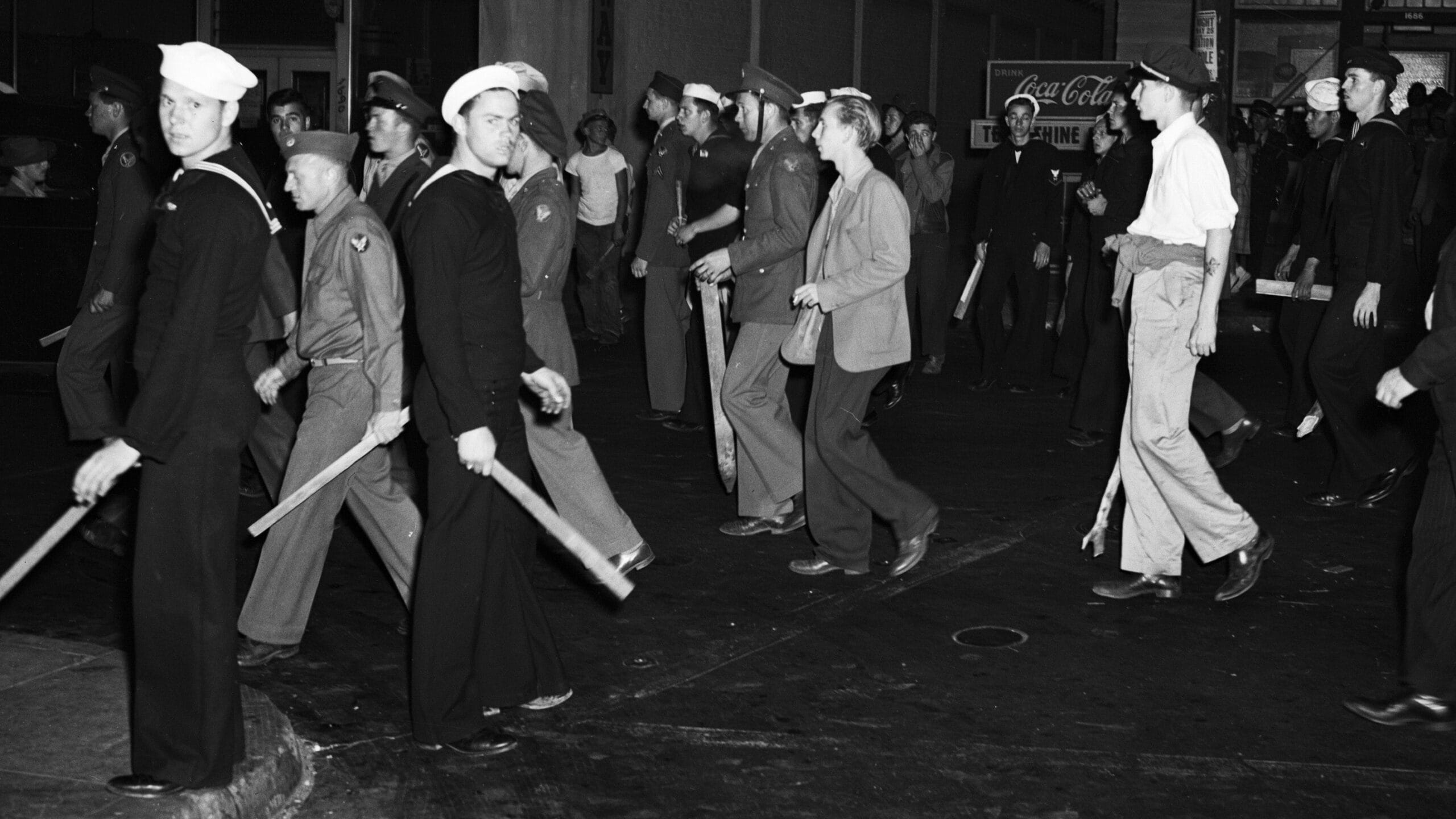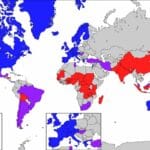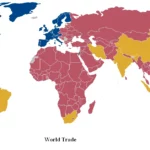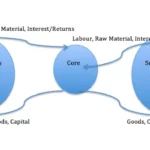America’s past echoes with tales of racial tension and social unrest. Two such echoes, the Watts Riots and the Zoot Suit Riots, resonate with striking similarities despite occurring two decades apart. These events, etched in history in 1943 and 1965, expose the deep roots of racial injustice that have long plagued American society. By examining their eerie parallels, we can gain a deeper understanding of not only our history but also the challenges that continue to face us today. This exploration encourages open dialogue about race, social justice, and the ongoing pursuit of a more equitable society.
Unmasking the Shared Threads: Similarities Between the Riots
The Watts Riots and the Zoot Suit Riots, though separated by time, reveal a chilling consistency in the way racial tensions simmered beneath the surface of American life. These eruptions of unrest were not isolated incidents; they were symptoms of systemic issues that demanded attention. Let’s dissect the common threads:
What Connected These Historical Upheavals?
- Systemic Racism: The Invisible Foundation: Both riots were rooted in a society where prejudice and discrimination were woven into the fabric of everyday life. During the Zoot Suit Riots, Mexican Americans faced constant othering, while Black Americans in Watts endured unfair treatment from law enforcement and systematic denial of opportunities.
- Economic Inequality: Fueling the Fire of Frustration: Imagine living in a place where the American Dream feels perpetually out of reach. Both Watts and the areas impacted by the Zoot Suit Riots were marked by stark economic disparities, with minorities disproportionately relegated to the lower rungs of the socioeconomic ladder. This lack of opportunity cultivated a breeding ground for anger and resentment.
- Police Brutality: The Catalyst for Chaos: In both cases, the match that ignited the powder keg was a pattern of police brutality and racial profiling. When those sworn to protect become a perceived threat, it breeds a potent mix of fear and anger, creating a volatile environment ripe for eruption.
- Clothing as Symbols: Beyond Fabric and Fashion: It’s fascinating how clothing transcended its practical purpose to become a loaded symbol in both events. The Zoot Suits, with their bold style, became a form of rebellion and self-expression for Mexican American youth navigating a climate of discrimination. In Watts, limited access to quality clothing became a tangible representation of the economic inequality that trapped many in a cycle of poverty.
- Media’s Role: Fanning the Flames of Discord: The media’s portrayal of these events often served to exacerbate the existing tensions. Instead of providing nuanced perspectives, news coverage frequently reinforced harmful stereotypes. Mexican Americans were often painted as delinquents during the Zoot Suit Riots, while coverage of the Watts Riots often emphasized violence, further fueling public fear and prejudice.
The Aftermath: Scars, Lessons, and Unfinished Business
- Catalysts for Change, Though Imperfect: As devastating as these riots were, they forced America to confront its own reflection in the mirror. They ignited conversations about racial injustice and spurred some reforms in policing and urban development. However, these changes often felt insufficient and姗姗来迟 for those who had borne the brunt of the suffering.
- The Unfinished Fight for Equality: Tragically, these riots underscored that the battle for equality was far from over. The same issues that ignited these events – police brutality, economic inequality, and systemic racism– continue to torment minority communities today. These echoes of the past serve as stark reminders that the journey toward justice requires constant vigilance and unwavering commitment.
Delving Deeper: Unpacking the Nuances
To fully comprehend the profound significance of these events, we must examine them through different lenses:
- Law Enforcement Response: Contrasting the police response in each riot can potentially reveal how attitudes towards minorities may (or may not) have evolved over time. Did law enforcement learn from past mistakes, or were they doomed to repeat history?
- Media’s Influence: By scrutinizing the media coverage of both riots, we can uncover how public perception was molded and manipulated. How did newspapers and television portray those involved? Did they perpetuate stereotypes or challenge them?
- The Enduring Legacy of Injustice: Investigating the long-term impact of these riots on the affected communities is crucial. How did access to jobs, housing, and education change (or remain stagnant) in the aftermath? Understanding these consequences sheds light on the deep and lasting wounds inflicted by social and economic disparities.
As we delve tiefer into these historical parallels, it’s essential to acknowledge that our understanding is constantly evolving. New evidence comes to light, interpretations are challenged and reshaped, and the pursuit of a more complete truth continues. These riots, while painful chapters in American history, offer invaluable lessons for building a more just future – a future where the echoes of injustice are finally silenced.
Unraveling the Threads: Zoot Suits and World War II
You might be wondering, “What could clothing possibly have to do with a world war?” During World War II, resources were scarce, and conservation efforts were paramount. Fabric, in particular, was a precious commodity, essential for military uniforms and other war-related necessities. This is where the zoot suit enters the narrative. These suits, known for their high-waisted pants and long jackets, required a significant amount of fabric – a detail not lost on those who viewed it as a blatant disregard for wartime austerity.
However, the excess fabric was only part of the equation. Zoot suits were predominantly worn by young Mexican Americans, a community already grappling with pervasive discrimination and prejudice. The suits, with their flamboyant style, were seen by some as rebellious, provocative, and a rejection of mainstream norms – which, in a way, was precisely the point. For these young men, the zoot suit became an act of defiance, a way to reclaim their agency and express their identity in the face of societal pressures.
The situation reached a boiling point in 1943 with a series of violent clashes in Los Angeles that came to be known as the Zoot Suit Riots. Tensions, fueled by racial prejudice and wartime anxieties, had been simmering for months. When rumors spread of zoot suiters attacking sailors, it ignited a powder keg. Mobs of servicemen took to the streets, targeting anyone wearing the distinctive suits. They were beaten, stripped of their clothing, and subjected to humiliating public degradation.
The Zoot Suit Riots were ultimately about much more than fabric or fashion. They laid bare the deep-seated racial tensions that festered beneath the surface of American society during World War II. While the country championed democracy abroad, it grappled with hypocrisy at home as minorities faced discrimination and violence.
The legacy of the zoot suit is complex and multifaceted. It stands as a reminder of the racism and prejudice faced by minority groups, yet it also embodies resistance and cultural pride. The zoot suiters, in their own way, challenged the status quo and fought for their right to self-expression. Their story continues to resonate today, reminding us that the fight for equality is a perpetual journey.
Deconstructing the Zoot Suit Riots: A Legacy of Tension and Transformation
The Zoot Suit Riots represent a pivotal moment in American history. They weren’t just about fashion choices; they exposed the raw nerves of a nation grappling with wartime uncertainties, racial prejudices, and a generation gap amplified by cultural clashes. These riots, erupting in Los Angeles in June 1943, offer a lens through which we can examine the complexities of American society during this tumultuous period.
The zoot suits themselves, with their high-waisted pants, long coats, and flamboyant accessories, were more than just articles of clothing. To many, particularly white Americans accustomed to a more conservative style, they represented a visible and unsettling challenge to the social norms of the time. For Mexican American youth, often referred to as “pachucos,” the zoot suit was a means of expressing their identity, rebelling against assimilationist pressures, and asserting their presence in a society that sought to marginalize them.
However, the wartime context played a significant role in escalating these tensions. With rationing in effect and resources directed toward the war effort, the zoot suit’s perceived extravagance was seen as unpatriotic and wasteful. This fueled existing prejudices against Mexican Americans, painting them as a threat to national unity and wartime solidarity.
The riots were sparked by a series of altercations between U.S. servicemen on leave and Mexican American youth in zoot suits. Fueled by rumors, stereotypes, and a sense of wartime righteousness, these confrontations quickly spiraled into mob violence. Mobs of sailors and soldiers roamed the streets of Los Angeles, attacking anyone perceived to be a zoot suiter.
What makes this period even more unsettling is the role of law enforcement. Instead of upholding justice and protecting all citizens, the police often turned a blind eye to the violence against Mexican Americans. Some accounts even suggest that law enforcement participated in the brutality, highlighting the systemic racism that pervaded institutions meant to serve and protect.
The Zoot Suit Riots ultimately exposed the hypocrisy at the heart of wartime America. While the nation rallied under the banner of democracy and freedom abroad, it grappled with deep-seated prejudice and inequality within its own borders. While a dark chapter in American history, the Zoot Suit Riots serve as a stark reminder of the ongoing fight for social justice and the importance of confronting prejudice in all its forms.
Bridging the Gap: The Zoot Suit Riots and the Chicano Rights Movement
The Zoot Suit Riots, while a seemingly distant event in 1943, cast a long shadow, influencing the rise and shaping the trajectory of the Chicano Rights Movement that gained momentum decades later. The riots, in many ways, served as a painful yet powerful awakening, exposing the raw wounds of racism and igniting a spirit of resistance that would fuel future generations.
Those young pachucos, proudly strutting in their zoot suits, were doing more than making a fashion statement. They were challenging societal norms, expressing their cultural identity, and demanding visibility in a world that sought to relegate them to the shadows. While their methods of expression were met with violence and oppression, their defiance planted seeds of resistance.
Fast forward to the 1960s and 1970s. The Chicano Movement emerged as a powerful force, challenging systemic discrimination in areas such as education, employment, and political representation. While the movement had its own unique context and motivations, it’s impossible to ignore the echoes of the Zoot Suit Riots in its demands for social justice and self-determination.
The experience of the zoot suiters, who had been targeted for their clothing, language, and cultural expression, resonated deeply with a new generation facing similar struggles. The riots had demonstrated the brutal consequences of challenging the status quo, but they also revealed the power of collective action and the importance of reclaiming one’s narrative.
This connection is evident in various ways. The Chicano Movement embraced cultural symbols and expressions, much like the zoot suit, as a form of resistance. The movement’s emphasis on cultural pride, self-determination, and challenging police brutality directly addressed the injustices experienced during the riots. Artists, writers, and activists from the Chicano Movement often referenced the Zoot Suit Riots in their work, ensuring that the memory of the event and its message of resistance lived on.
The relationship between the Zoot Suit Riots and the Chicano Rights Movement is complex and multifaceted. It’s a story of intergenerational trauma and resilience, of learning from past injustices to fuel future movements for change. The riots, while a dark chapter, ultimately helped to spark a broader movement for social justice, reminding us that the fight for equality is an ongoing process that requires constant vigilance and a willingness to challenge systems of oppression.
Unmasking the Shared Causes: Detroit Race Riots and Zoot Suit Riots
The Detroit Race Riots of 1943 and the Zoot Suit Riots, though geographically separated, stand as chilling reminders of the deep-seated racial tensions that gripped America during the mid-20th century. While the specific details and communities affected differed, these events share a common thread: a toxic blend of racial prejudice, economic anxieties, and perceived injustices that ignited into devastating unrest.
One striking similarity lies in the entrenched prejudice and discrimination that African Americans faced in Detroit and Mexican Americans confronted in Los Angeles. In Detroit, generations of African Americans had navigated a landscape of segregation, where securing decent housing, accessing quality education, and obtaining well-paying jobs were constant uphill battles. Similarly, Mexican Americans in Los Angeles faced their own set of challenges, often stereotyped as lazy, dangerous, or un-American. Even their choice of clothing, the Zoot Suit, became a target, misinterpreted as a symbol of delinquency instead of a proud expression of cultural identity.
The outbreak of World War II, while seemingly uniting the nation against a common enemy, tragically exacerbated these existing racial tensions. The war effort created a surge in demand for jobs and housing, leading to increased competition between different racial and ethnic groups. Some white Americans, fueled by fear, economic uncertainty, and a sense of entitlement, resented any perceived gains made by minorities, even when those gains were minimal and hard-won. This resentment was further fueled by wartime propaganda, which often portrayed the enemy in racially charged terms, intentionally or unintentionally contributing to a climate of fear and intolerance.
It’s crucial to understand that these riots didn’t erupt out of a vacuum. They were sparked by specific incidents that, while seemingly isolated, exposed the raw nerves of racial injustice and ignited years of pent-up frustration and anger. In Detroit, the arrest of several Black patrons at a nightclub, perceived by many as racially motivated, sparked the initial unrest. In Los Angeles, a confrontation between white sailors and Mexican American youth wearing Zoot Suits, again perceived as racially charged, quickly escalated into widespread violence.
Further fueling the flames was the perceived complicity and inaction of those in power. In both Detroit and Los Angeles, the response from law enforcement and government officials was often slow, inadequate, and viewed by many as biased against the minority groups involved. Some argue that the police, meant to protect and serve all citizens, instead participated in the violence against African Americans in Detroit and Mexican Americans in Los Angeles. This apparent betrayal of trust further eroded the already fragile relationship between these communities and those sworn to protect them.
The Detroit Race Riots and the Zoot Suit Riots stand as painful reminders of the human cost of prejudice and inequality. They illustrate how social and economic pressures, often heightened during times of war and uncertainty, can inflame existing tensions and lead to devastating consequences. These events underscore the critical importance of addressing the root causes of racial prejudice, promoting understanding and empathy between different communities, and striving to create a more just and equitable society where every individual has the opportunity to thrive.
- Unveiling the Enigma: Mansoureh Khojasteh Bagherzadeh’s Public Appearances & Private Life in Iran - July 18, 2025
- Unveiling the Mystery: Mansoureh Khojasteh Bagherzadeh’s Husband: A Rare Glimpse into a Private Life - July 18, 2025
- Unveiling Masoud Khamenei’s Mother: Power, Influence, and Iran’s Future - July 18, 2025
















